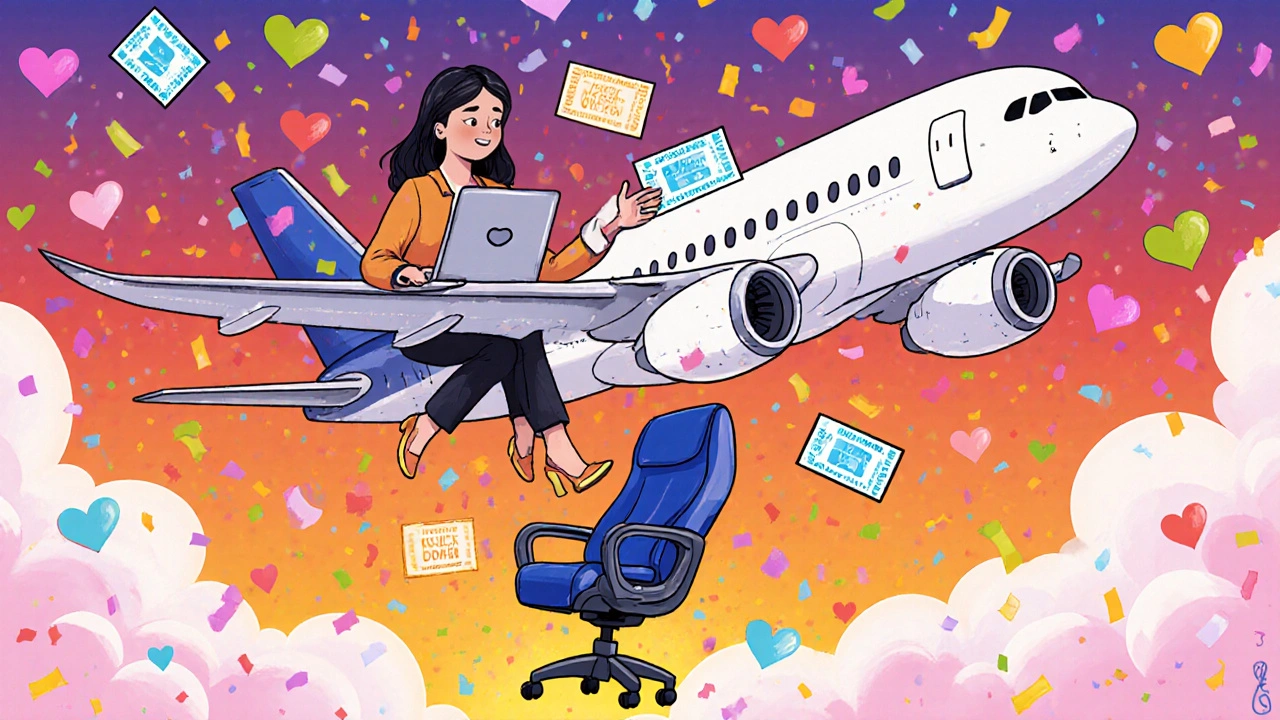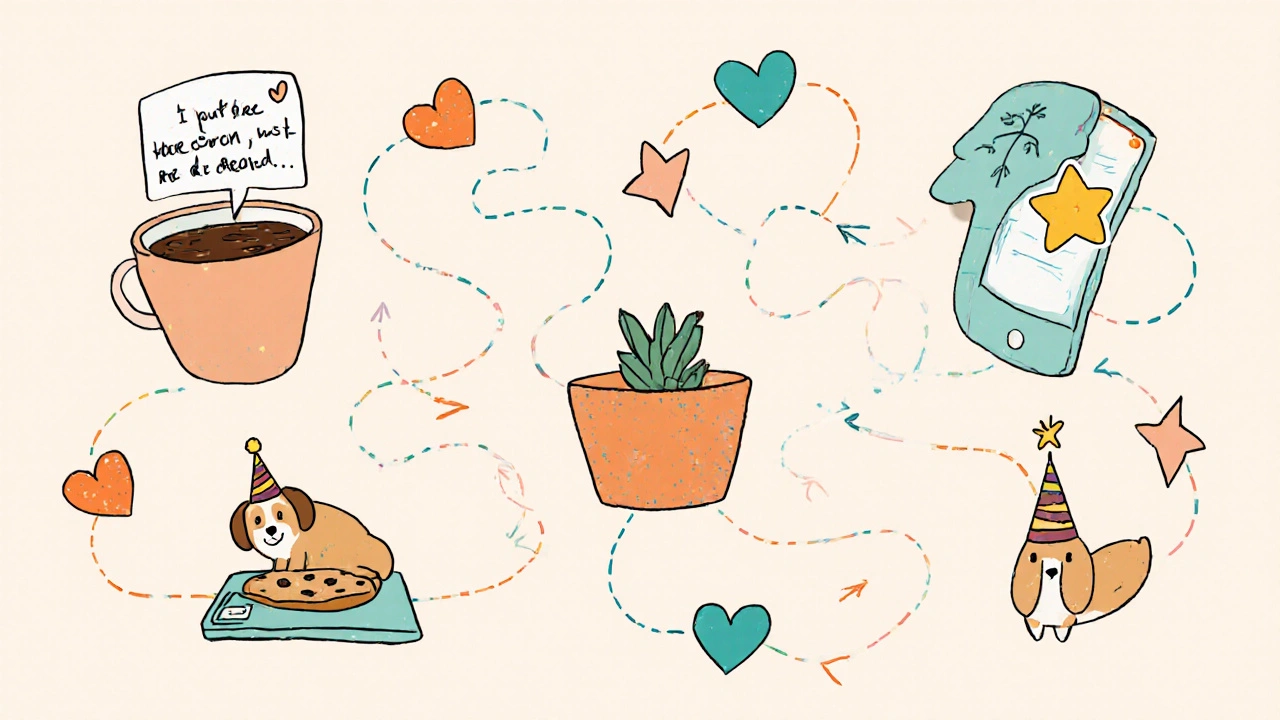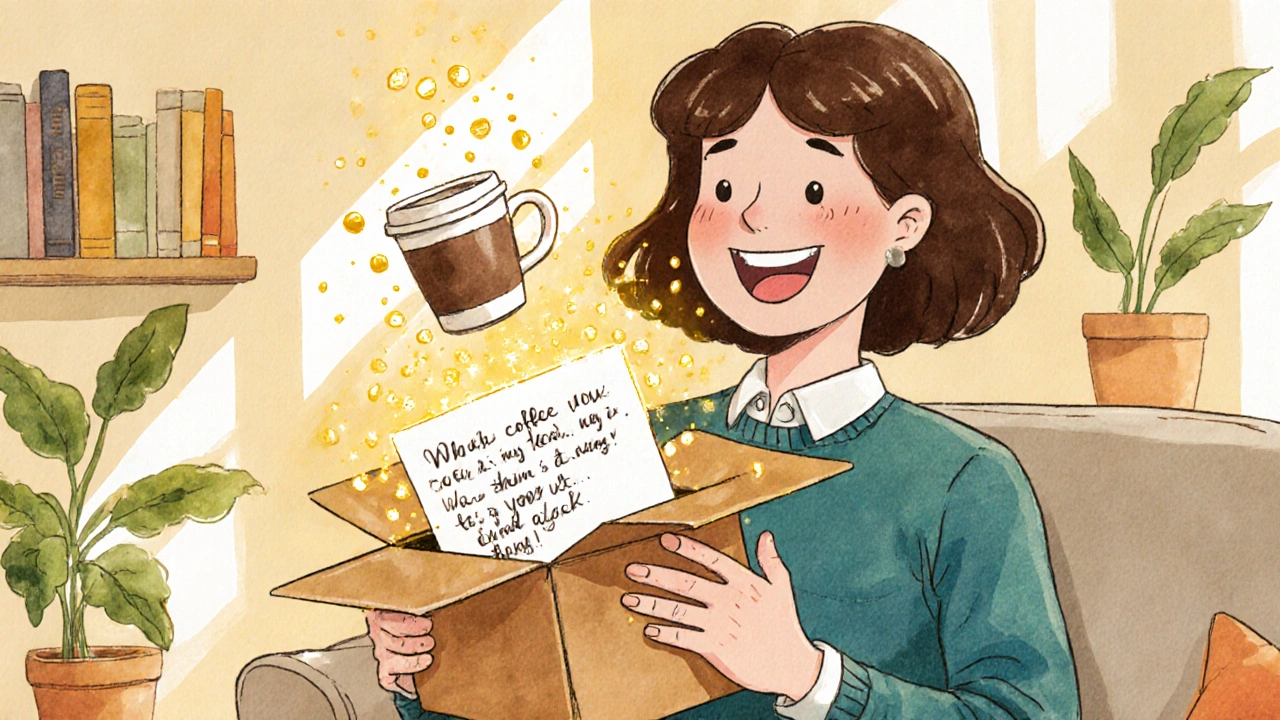Surprise & Delight Impact Calculator
Calculate Your Impact Score
Use the article's research to estimate how your surprise strategy could affect customer loyalty and brand love.
Your Impact Score
Key Metrics
Your personalized strategy is already showing great potential.
Why Random Acts of Kindness Are Now a Business Strategy
Most companies chase customers with discounts, loyalty points, and email blasts. But the brands that truly stick in people’s minds? They don’t ask for loyalty-they earn it. Through something simple, unexpected, and deeply human: a surprise.
It’s not a coupon. It’s not a free month. It’s a handwritten note tucked into a package. A free dessert at checkout when you didn’t even ask. A gift card mailed out of nowhere because you paid off your loan last month. These aren’t marketing campaigns. They’re moments. And they’re changing how people feel about brands.
Surprise and delight isn’t about spending more money. It’s about spending it smarter. When done right, it turns customers into fans. And fans don’t just buy again-they tell their friends, leave glowing reviews, and forgive you when you mess up.
What Makes a Surprise Actually Work?
Not every random gift lands. A $5 credit sent via automated email? Feels like a glitch. A free upgrade to first class because you’ve been a loyal cardholder for five years? That feels like being seen.
The difference is intention. Authentic surprise and delight comes from knowing your customer-not just their purchase history, but their behavior, their preferences, their life moments. Capital One noticed customers who paid off a loan often felt proud. So they started sending handwritten thank-you notes with a $25 gift card to a local coffee shop. No strings. No fine print. Just recognition. Result? A 22% jump in cross-sell conversions.
Why did it work? Because it matched the emotion. Paying off debt isn’t just a financial milestone-it’s emotional. The brand didn’t just react to a transaction. They responded to a feeling.
Neuroscience backs this up. A 2022 study in the Journal of Consumer Psychology found that unexpected rewards trigger 47% more dopamine than planned ones. That’s the chemical behind joy, memory, and attachment. Your brain doesn’t just remember the gift. It remembers the brand that gave it.
Surprise vs. Loyalty Programs: Why One Wins
Loyalty programs are predictable. You earn points. You redeem them. You feel… nothing. It’s transactional. Like getting paid for showing up.
Surprise and delight is the opposite. It’s emotional. It’s personal. And it’s unpredictable.
Take American Express. Their Membership Rewards program gives points. Solid. Reliable. But their “Surprise Upgrade” program? Randomly upgrade a small group of cardholders to business class. No application. No eligibility check. Just a surprise email saying, “You’re flying up.”
They targeted only 0.3% of customers. Yet those upgrades generated 3.7 times more social media mentions than their entire rewards program. Why? Because people don’t share points. They share stories.
According to Forrester Research, customers who feel “brand love” have 3.2x higher lifetime value than those who just keep buying because of discounts. Surprise and delight doesn’t just keep people coming back-it makes them want to tell everyone.

How to Build a Surprise System (Without Going Broke)
You don’t need a Fortune 500 budget. You need a system.
Here’s how small businesses are doing it:
- Find the right moment. The best triggers? Post-purchase, after a service win, or during a milestone (birthday, anniversary, paying off debt). Checkout and delivery moments have 32% higher impact.
- Know your customer. Use at least three data points: purchase history, browsing behavior, and feedback. Did they buy a plant last week? Send a care guide. Did they leave a 5-star review? Send a handwritten note.
- Keep it small, but meaningful. A 7:2:1 rule works well: 70% low-cost surprises (note, sticker, sample), 20% mid-range (free shipping, $10 gift card), 10% high-impact (free product, experience). The goal isn’t cost-it’s connection.
- Automate the trigger, humanize the delivery. Use CRM tools to auto-send a note when someone hits a milestone. But make sure it’s signed by a real person. Handwritten beats typed every time.
- Measure what matters. Don’t track sales. Track shares. Track reviews. Track repeat visits. If people start talking about your brand unprompted, you’re winning.
Shopify merchants using this approach report 41% repeat customer rates-compared to the industry average of 23%. One store started including free samples and handwritten notes in every order. Within six months, 68% of their customers said they “felt like family.”
When Surprise Backfires (And How to Avoid It)
Not all surprises are good surprises.
A major telecom company sent automated $5 credits to customers who’d been with them for over a year. No context. No explanation. Just a message: “Thanks for being a customer!”
Over 1,200 people complained on Twitter. Why? Because it felt fake. Like a bot trying to be nice. People don’t want to be treated like data points. They want to be treated like people.
Qualtrics found that 72% of consumers feel worse about a brand when a surprise feels impersonal or irrelevant. A free T-shirt to someone who never wears shirts? A gift card to a store they’ve never heard of? That’s not delight. That’s noise.
Here’s how to avoid it:
- Don’t surprise people during a service failure. If your app crashed, don’t follow up with a free coffee. Apologize first.
- Don’t overdo it. 38% of consumers report “surprise fatigue” when brands do it too often without real personalization.
- Don’t use generic gifts. A $10 Amazon card is easy. A $10 gift card to their favorite local bookstore? That’s thoughtful.

The Rise of Micro-Delights
The biggest shift in 2025? Small, frequent surprises are beating big, rare ones.
Instead of one grand gesture a year, top brands are layering in tiny moments of joy:
- A skincare brand sends a free sample of a new product every time a customer reorders.
- A SaaS company adds a fun animation to the dashboard every time a user hits a milestone.
- A coffee shop texts loyal customers: “Your usual is ready. Come get it. We added an extra shot-on us.”
These “micro-delights” create constant emotional reinforcement. Shopify merchants using this method saw 27% higher retention than those relying on annual surprises.
Why? Because brand love isn’t built in one moment. It’s built in a hundred small ones. Over time, the brand stops being a vendor. It becomes a part of daily life.
What the Data Says: Is This Worth It?
Let’s cut through the fluff.
Here’s what the numbers show:
| Metric | Surprise & Delight | Traditional Loyalty Program |
|---|---|---|
| Repeat Purchase Rate | 28-35% | 15-20% |
| Customer Lifetime Value | 42% higher | Baseline |
| Social Media Shares | 3.7x more | Low |
| Word-of-Mouth Impact | 4.3x stronger | Minimal |
| Customer Sentiment Increase | 5.2x stronger emotional resonance | Neutral |
Companies in the top quartile for delightful experiences outperform the S&P 500 by 11.5% over three years. That’s not luck. That’s strategy.
And it’s not just for big brands. Small businesses using surprise and delight report 27% higher Net Promoter Scores than those using automation alone. The key? Human touch.
Where This Is Headed: The Future of Brand Love
AI is making this easier. Salesforce’s new “Delight Moments” scoring uses 47 behavioral signals to predict when a customer is most likely to appreciate a surprise-with 83% accuracy. Adobe’s upcoming “Delight Score” will measure emotional impact across every touchpoint.
But here’s the truth: technology can trigger the moment. Only humans can make it meaningful.
The brands that win next year won’t be the ones with the fanciest algorithms. They’ll be the ones who still write notes by hand. Who remember your dog’s name. Who send a birthday card with a single cookie-not because they have to, but because they want to.
As Gary Vaynerchuk said: “Going above and beyond to surprise and delight customers in a way they wouldn’t expect is a great way to leave that impression and show what your intent truly is.”
Intent matters. People know when you’re trying to sell them. And they know when you’re trying to make them feel seen.
That’s the difference between a transaction-and a relationship.

Comments (3)
Dave McPherson
Oh wow, another ‘surprise and delight’ thinkpiece masquerading as innovation. Let me guess-you also think handwritten notes are the future of CRM? Newsflash: if your entire customer retention strategy hinges on a $25 coffee card and a cursive ‘thanks,’ you’re not building brand love, you’re performing emotional theater. Real loyalty comes from reliability, not performative kindness. My ISP sent me a $5 credit with zero context and I called them out. Why? Because it felt like a bot trying to apologize for being a garbage service. You can’t buy authenticity with a Staples sticker and a Starbucks gift card. This isn’t psychology-it’s corporate cosplay.
Julia Czinna
I actually think there’s something powerful here-even if it’s been overhyped. The key isn’t the gift, it’s the recognition. I got a tiny hand-written note from a local bookstore after buying my third poetry collection last year. No coupon. No loyalty punch card. Just: ‘We noticed you love Neruda. Here’s a rare edition we found.’ I cried. Then I told five friends. That’s the magic: when a brand sees you as a person, not a revenue line. It doesn’t need to be expensive. It needs to be intentional. And yes, automation can trigger it-but if the delivery feels robotic, it backfires. The 7:2:1 rule? Brilliant. Keep the small stuff frequent. The big stuff? Rare. And always signed by someone who actually works there.
RAHUL KUSHWAHA
This is beautiful 😊 I work in small shop. We started adding one free cookie with every order last month. No one asked. Just... a little thing. Now customers say 'I came for coffee, but stayed for the cookie.' 💛